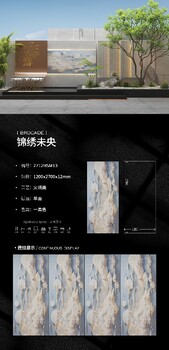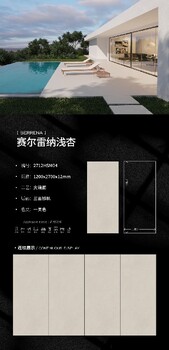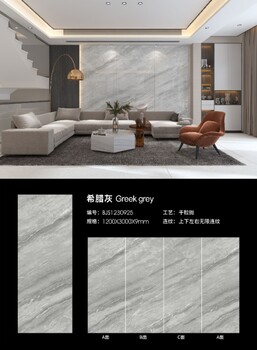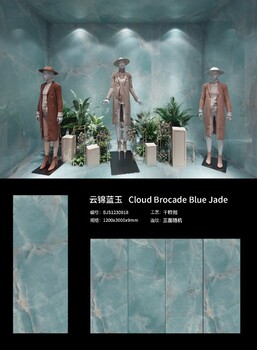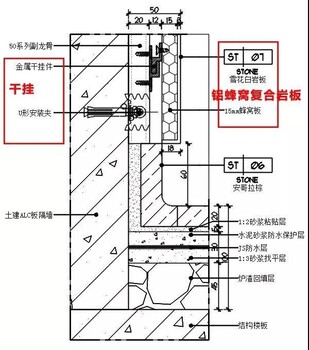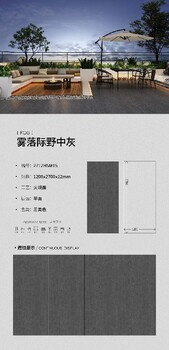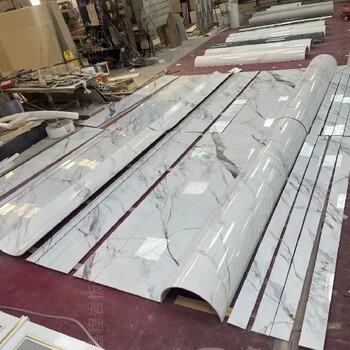1、 What is rock slab?
Rock slab is made of silica, inorganic clay, quartz feldspar powder and other aggregates plus ceramic powder. After being pressed by a 10000 ton press, its hardness is improved by the effect of pressure. It is fired in a furnace with a high temperature of 1200~1500C and can withstand cutting, drilling, polishing and other processing processes. It is a new type of ceramic material with super specifications. The texture of rock slab is mainly imitation natural stone, although the texture is close to natural stone, it is a more practical plate.
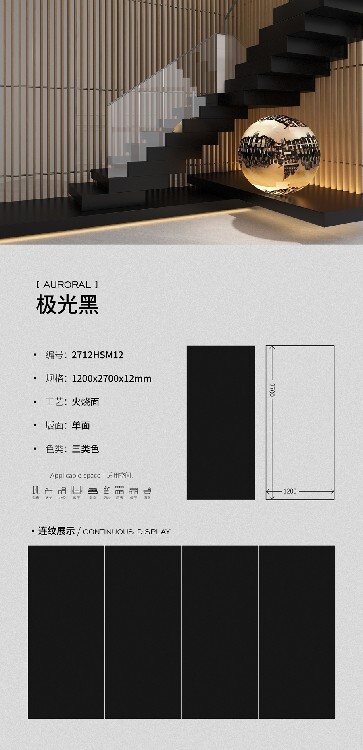
What are the applications of rock slab?
1. Cupboard top
The kitchen table top is made of rock plate, which not only has high appearance and texture, but also has good antibacterial performance and clean.
2. Toilet washstand counter top
The use of rock plate on the top of the washstand not only changes the cutting shape, but also has a stronger sense of design. In addition, the characteristics of moisture-proof, deformation proof and low water absorption are also very suitable for the wet environment of the toilet.
3. Trim panel
Because the veneer is attached to the wood plate, aluminum profile frame, stainless steel frame, etc., the rock plate is required to be light and thin, suitable for 3-4mm thick rock plate. At present, it is mainly imported from Italy and Spain.
4. Furniture table
The ultra-thin rock slab can be used to pave walls, cabinets, doors and electrical panels according to the indoor style. After the rock slab is mounted on the wall, it can be used with light strips, which is beautiful.
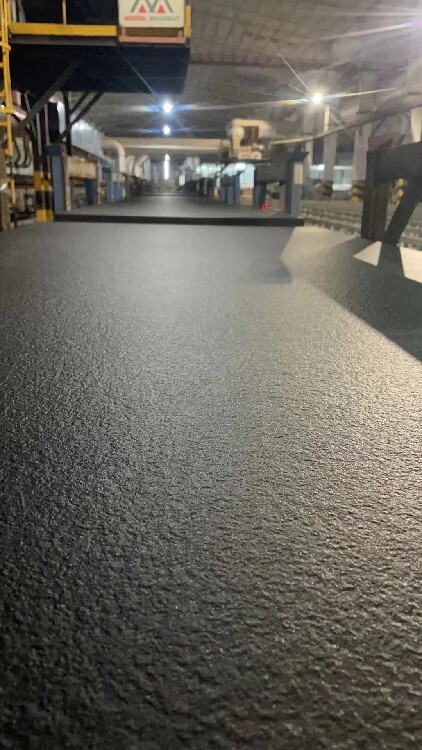
The rock slab is so good, how can I pick it
With the high-tech achievements of new materials - rock plate out of the circle
In the market, there began to be many ceramic plates mixed with rock plates, trying to fish in troubled waters.
The difference between the two is that the raw materials are different and the production process is different. The raw material of ceramic board is porcelain clay, and the surface is glazed. The raw material of the rock plate is stone. The overall pattern and color are consistent with the surface, and there is no glaze feeling.
So, how to distinguish "true and false rock slab"?
Look at the surface
01 The color of the rock plate is clear and not muddy, the surface has no plastic feeling, and the front of the product has no pores. Fine grain and crystal, natural moire and high gloss.
At the same time, it can be touched by hand, and the surface of the rock slab has different technological effects.
The rock plate with bright surface is smooth, non astringent and non grainy; The mold surface is grainy.
The matte rock plate, with fingers across the surface, has a fine touch and no sense of frustration.
02 Look at the brick back of the rock plate and reject the tire mark
Both rock slab and ceramic tile are pressed into green body by press and then fired, but the bottom surface of rock slab is basically smooth and transparent without fixed mold lines.
The ceramic tile bottom basically has different mold lines. In addition, cut the rock slab and look at the blank from the side. A good rock slab is generally a full body slab, and the blank is dense and uniform.
See light transmittance
03 The ceramic plate consists of body bottom+bottom glaze+surface glaze/protective glaze.
The composition of the rock slab is only the bottom body+transparent glaze. The rock slab without the bottom glaze layer is transparent as a whole, with better light transmittance. The body does not have the white line of ordinary ceramic tiles.
04 The rock plate is forged by the full body technology, which is superior to the traditional large plate in toughness, and the full body technology materials are added. The surface treatment technology is very fine and complex, especially the relatively realistic texture of the stone.
The Mohs hardness of the rock plate can reach grade 6. When purchasing, you can use iron wire and hard objects to scratch the surface of the product, and the rock plate will not have any scratches.
Compared with ceramic tile slabs, rock slabs can be drilled, polished, and cut, which is suitable for various arbitrary shapes. Although the shape of the slab is similar to that of rock slab. However, its characteristics are not as strong as rock slab, and edge collapse and cracking often occur in deep processing.
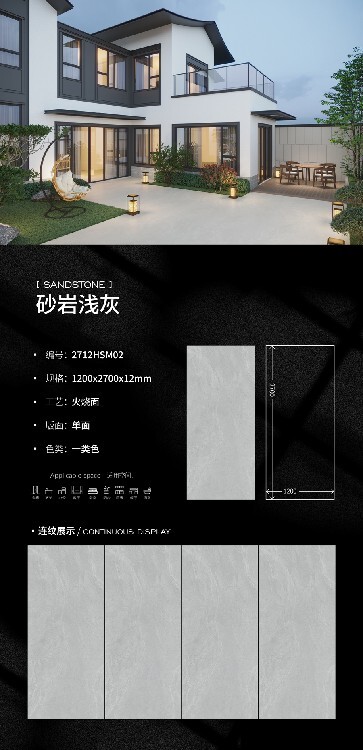
As a new species in the household field, rock plate has gradually attracted public attention and become a new favorite in the household field due to its large size, strong plasticity, diverse patterns, high temperature resistance, abrasion resistance, impermeability, acid and alkali resistance, zero formaldehyde and other characteristics.
So, what is the holiness of this kind of rock slab that feels like marble and stone, and sounds like rock and ceramic when knocking?
The rock plate is composed of natural minerals such as feldspar, quartz and clay. It is pressed by a 10000 ton press and then fired at 1200 ℃. Its solidity allows the rock plate to directly contact high-temperature objects, and it is not easy to break, deform or change color, nor emit any smell. However, the definition of rock plate in the market is still vague. Some people say that rock plate is more ceramic, It is also said that rock plate is a product of ceramics.
In fact, rock slab and ceramics are two completely different products, they are just similar in surface design and color, but their manufacturing materials are different, and their product characteristics are also different. The big difference between rock slab and traditional ceramics is that it improves machinability, and rock slab can withstand a series of fine processing from cutting, hole digging, chamfering, etc. From the current point of view, in addition to being unable to replace special-shaped stone products, rock slabs can be replaced wherever ceramics and stone slabs can be decorated.
1 Wear resistance
The rock plate is generated under high temperature and pressure, and its hardness is above grade 5. The scratch or damage will not occur if the steel knife is used directly.
2 Pollution resistance
The rock plate is highly dense, with a nano protective layer, a 5-level stain resistant surface treatment, and a wet towel to easily clean the stains.
3. High hardness and impact resistance
The thickness of rock plate varies from 3mm to 20mm, and even thin rock plate has high hardness. The impact resistance of 6mm thick rock plate is equivalent to that of 35mm granite. Even meat and bone cutting on the rock plate will not break.
4 Antibacterial
Rockboard has food grade surface, health and environmental protection, and has passed NSF certification (NSF is the cooperation center of the World Health Organization in food safety and drinking water safety and treatment).
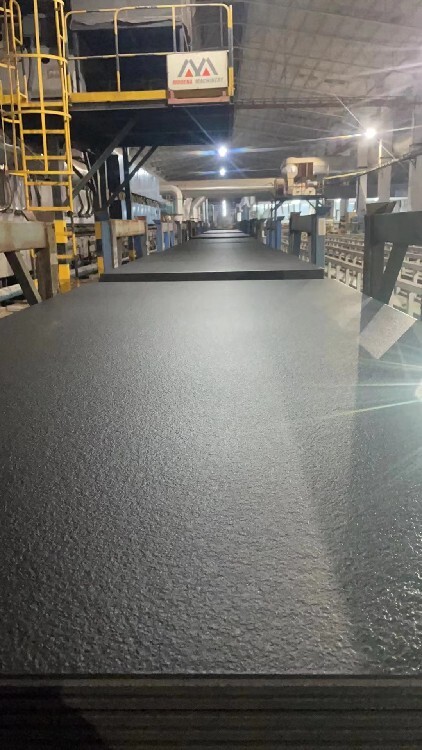
Foshan Shangpin Suyan Bejas Rock Plate is an integrated rock plate supply platform focusing on rock plate R&D, design and sales, with 15000 square meters of headquarters exhibition hall and 60000 square meters of large-scale storage center, which can accommodate more than one million square meters of products, forming a complete set of storage management system. With thousands of products, comprehensive specifications and strict control over the quality of each batch of products, we have reached long-term strategic cooperation with Shuncheng, Enoch and other industrial enterprises to ensure stable supply chain. Adhering to the business philosophy of "customer value first", the company provides OEM services for many brands in the industry.
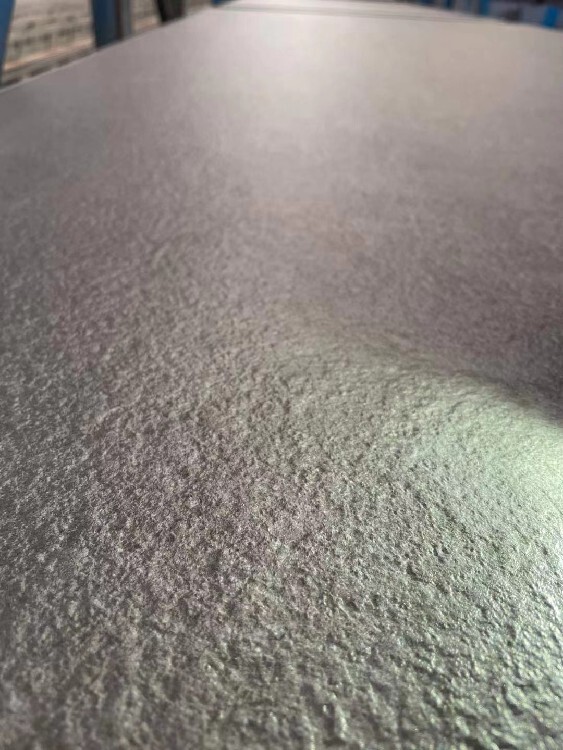
Digital mold rock plate
With the arrival of the era of rock slab, ceramic rock slab, as a decorative panel material, has undoubtedly put forward new requirements for the production technology of the industry with its larger size, stronger decorative effect, thinner development direction and more refined subsequent processing performance requirements.
The texture on the surface of rock plate products as fine as 0.1mm can be more refined, without any distortion or blurring, and without fear of close examination. Through the effect of 3D printing technology stacking layer by layer, the rock plate made by the characteristic process of digital mold is paved with the texture of the mold. Gently brush it with your hand, and you can fully feel the touch of mold feedback - rich levels, concave and convex, smooth and smooth.
#Imitation leather technology
With special glaze and comfortable and smooth imitation leather texture, it can be adjusted according to the product texture design to achieve variable effects and outline the aesthetic symbol
#Delicate touch
It is fired at 1250 ℃ at high temperature and added with special glaze to press the mold. It has a concave and convex feel. The lifelike stone texture is natural and changeable, thin and smooth
#Waterproof and antifouling
The glaze is synthesized by various processes and applied with protective glaze, completely separating the outside from the inside of the ceramic tile, waterproof, antifouling, anti-skid, and can be pasted on the wall and floor
Combined with high wear resistance technology,
Make the glaze visual stereoscopic
The tactile concavity and convexity are caused,
It shows the touch of coarse ore.
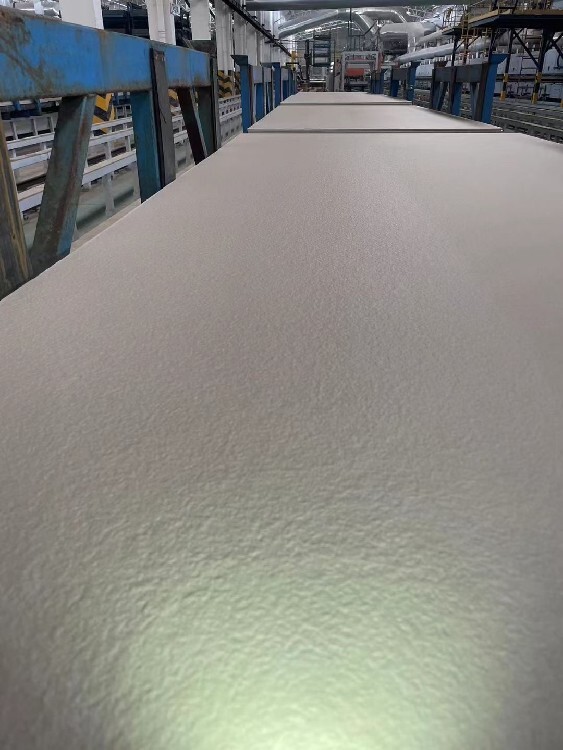
The difference between domestic and imported rock plates is that what suits you is good!
1 Surface hardness
The domestic rock plate has a Mohs hardness of grade 6, slightly lower than that of grade 7 imported from Europe. The factors affecting the surface hardness are generally determined by the press and the surface enamel. The difference between the domestic rock plate and the imported rock plate can be shortened by using the same Italian high tonnage press. However, since the glaze formula is the patent of the European rock slab enterprises, the domestic rock slab and the imported rock slab from Europe cannot be marked.
#2 High temperature resistance
The high temperature resistance of the imported rock plates from Europe is similar to that of the domestic rock plates, which require 1250 ° high temperature calcination. However, the adaptability of temperature difference is always based on the formula quality of the green body itself, so the imported rock slabs from Europe can withstand the sudden cooling and heating.
#3 Touch texture
The natural surface of the rock slab imported from Europe feels more like a rock, with a strong concave convex texture, which is not rough. When you touch it, you will have a more intuitive and delicate touch. The natural surface of the domestic rock slab will be much smoother and have a distinct reflective feeling.
#5 Thickness dimension
At present, imported rock plates can be 3mm thin, and domestic rock plates can be 5.5mm thin. If the cabinet and wardrobe plates are used, the imported rock plate can reduce the weight due to the thinner plate. However, because it is thin and easy to break, in the application of bar counter and wash basin, more than 5.5 mm thick rock slab is used. Generally, the specification of rock slab is 2400 * 12003000 * 15003200 * 1600.
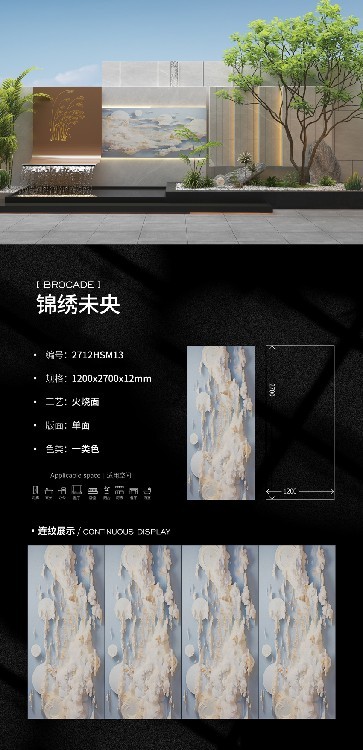
Bejas rock plate | | Rock plate processing introduction II: opening and splicing
Bejas slate:
Rock slab is a popular decorative material in the market now. It is popular in the decoration market because of its large size, natural pattern, thin thickness, light weight and other characteristics. The deep-processing products of rockboard are also moving towards various consumer groups, and are gradually loved by many people.
Procedure 2
Rock plate opening
1 Stable placement and multi-point support
Before starting the operation, check whether the bottom support is stable and horizontal, and there is sufficient support force on the cutting side. The area to be cut shall be free of impurities and dirt, and shall be fully and evenly distributed under the plate.
2 Reasonable blank, stress
Always leave a distance of at least 5cm from the hole to the edge of the plate. The fillet radius of the hole shall be at least 3 mm. The larger the fillet radius of the hole, the greater the structural bearing capacity of the panel. On the contrary, any inner corner of the hole without fillet will cause stress points on the panel. Do not cut 90 degree right angles without fillets at any time.
Procedure III
Rock plate edge grinding
It is recommended to treat the edge of the rock slab table with rounded corners or bevel cutting, which can make the table more impact resistant, beautiful and safe
3.1 When grinding the duck mouth, 6 mm should be left, which is too thick to be beautiful, and too thin to be easily crushed. Generally, it is 1 cm to 2 cm.
3.2 (thick plate) edge grinding speed is 1.2-2m/min. The recommended speed for edge grinding is 1.35m/min, 1.8m/min for 5 * 5 similar bevel edges, and 2m/min for straight edges. At present, the edging machines used by each processing plant are quite different, with more glass machines and rock plate machines.
3.3 The grinding wheel speed should be properly adjusted according to the grinding speed. There are many glass grinding machines with 4 (polishing)+6 (molding)+1 (shaping) grinding heads.
3.4 Before grinding, try to grind with small plates in advance, and adjust the corresponding parameters according to the effect before grinding a large number of plates. 3.5 At present, fine steel wheel is used for edge grinding and resin wheel is used for polishing.
Procedure IV
Seamless splicing of rock slab
145 ° cut
In the application field of rock slab, whether it is for home or commercial space, there are many right angle products, such as bathtubs, wash basins, large and medium-sized island platforms, cabinet corners, and even the walls and dry hanging of commercial space. The demand for rock slab processing is not great, but the 45 ° cutting of rock slab is required here.
In addition, the 45 ° cutting angle of the rock plate should be smooth, and the processing precision determines the quality of the finished product. The cut is flat, the splicing is beautiful without defects, and the seamless splicing is truly achieved.
2 Treatment before and after splicing
Seamless splicing refers to forming a sharp angle with the glaze when chamfering at 45 degrees, and leaving 0 edge for corner contact.
Because it is inevitable that there will be some defects when the machine is used for cutting during edge grinding, it is necessary to conduct a second grinding inspection manually after the end of edge grinding to ensure the quality of finished products.
3 Paste
Before pasting, we need to do some processing:
1. Clean the rock plate and dry the water
2. Check the size of processing drawings, etc
3. Make a set of clamps to position the rock plate splicing to ensure the straightness and beauty of the finished product
4. After positioning the rock plates to be spliced, put the glue into the interface
5. Use cloth tape to pull and stick the interface to increase the effect of seamless splicing
6. Leave for 3-5 minutes. If the glue is not completely dry, the spilled glue shall be treated preliminarily.
4 Surface treatment
After the glue has dried for 20-30 minutes, use sponge eraser, angle grinder, sandpaper and other tools to polish off the excess glue (special attention: sponge eraser or angle grinder must be polished at an angle of 45 degrees). When the grinding plate makes a brittle sound, the glue has been polished.
Special attention: stop polishing once it makes a brittle sound, otherwise the glaze will be damaged and beautiful, and then use a blade to scrape the excess glue clean.
5. Reinforcement and waterproof treatment
After the above four processes are completed, the back of the bonding interface needs to be reinforced with special edging strips or corner pieces, which increases the bonding strength and stability to prevent falling off and cracking.
Bathtub, wash basin and other products in contact with water need waterproof treatment.
1. Use a specific waterproof adhesive tape to bond the back of the joint with waterproof adhesive tape;
2. Use the commonly used structural glue to apply glue again to all splices, and the structural glue has the effect of secondary reinforcement.
6 Post antifouling treatment
After the above five processes are completed, it is necessary to apply anti fouling agent on the interface to make the interface more beautiful.
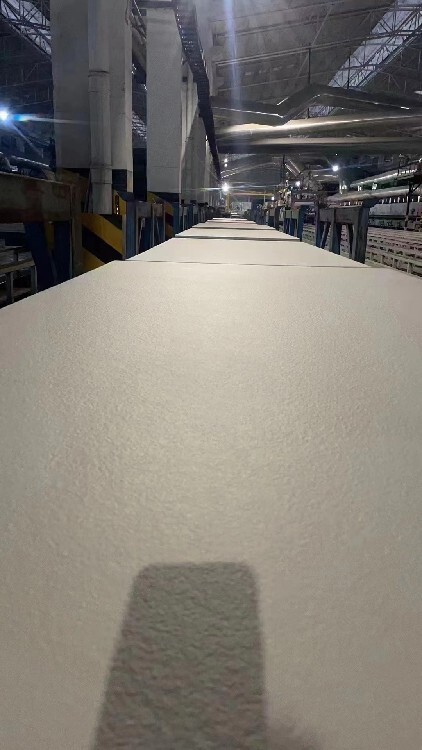
Introduction to Rock Plate Processing
The demand for rock plate processing and cutting has led to more and more in-depth processing of various types of household products.
There are more and more processing problems,
01 Rock plate 「 cutting 」
When starting to cut the rock plate, make sure that the bottom of the rock plate is completely located on the flat operating platform, and the plate is flat without inclination. The lower the vibration drop during the cutting operation, the better the effect. In order to reduce vibration, a disposable wooden board or rubber base (such as vulcanized rubber) board is placed under the rock plate.
1.) Check the cutting machine first, especially in the following aspects:
The workbench of the machine is clean, durable, solid and undamaged.
The table of the machine is completely level.
The machine's workbench is free of waste materials previously processed, and the surface is normal.
2.) Pay attention to the following aspects during cutting:
When cutting, use a blade that is suitable for cutting rock plates or porcelain products.
The rock plate is fed in the same direction as the rotation of the cutting plate.
The cutting opening is proportional to the thickness of the cutting blade.
The smaller the cutting blade radius, the greater the spindle speed.
The slower the feeding speed, the better the cutting effect.
The feeding and discharging speed shall always be 50% slower than the rated speed.
To ensure a good cutting effect, use a saw blade with a thickness of 1-1.5mm.
At the same time, it is recommended to cut a width of 3cm on each side of the plate to clean the edge of the plate and reduce the tension generated during cutting (cut the long side and then cut the short side).
Because rock plate is a kind of material with high hardness and density, a large amount of water is used to assist in cutting to fully cool the blade.
Spray cooling water directly to the cutting point where the blade contacts the plate, and keep the cutting speed of the first 30cm and the last 30cm at 0.6m-0.75m/min to ensure the flatness of the cutting surface.
After each processing and before the finished cutting products are dry, clean the dust left by the surface rock plate processing with clean water.
02 Rock plate 「 opening 」
Before starting the operation, plan the cutting position of the plate to ensure that the plate can better withstand the cutting pressure. Please try to make a hole in the middle of the rock plate
Always leave a distance of at least 5cm from the hole to the edge of the plate. The fillet radius of the hole shall be at least 3 mm.
The larger the fillet radius of the hole, the greater the structural bearing capacity of the panel.
On the contrary, any inner corner of the hole without fillet will cause stress points on the panel.
Do not cut 90 degree right angles without fillets at any time.
03 Rock plate 「 edge treatment 」
It is recommended to treat the edge of the rock slab table with rounded corners or beveled cuts, which can make the table more impact resistant, beautiful and safe.
The rock plate is free to cut and has rich specifications.
For designers, the rock slab is more like a piece of cloth, which can be cut according to their design needs.
After cutting and processing, the rock slab has a sense of design and provides a broader design space for designers.








